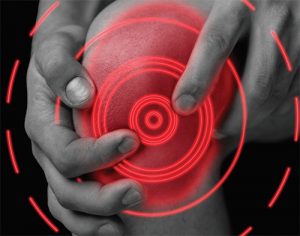
POPROTSKIY ALEXEY/SHUTTERSTOCK.COM
Inflammation in the knee was found to be associated with development of pain sensitization in recent research with a cohort from the Multicenter Osteoarthritis Study (MOST). This research finding may indicate that targeting of inflammation could help reduce pain severity in knee osteoarthritis (OA).
Tuhina Neogi, MD, PhD, says that her and her colleagues’ research, published in the March 2016 issue of Arthritis & Rheumatology, found that inflammatory lesions seen on MRI were associated with worsening of sensitization and development of new sensitization, whereas the bone marrow lesions were not associated with sensitization development.1 Inflammatory lesions in knee OA, as evidenced by synovitis or effusion, seem to play a role in sensitization and, by extension, are probably one of the pathways by which these inflammatory lesions contribute to knee pain, she says.
“We know that bone marrow lesions contribute to knee pain, but the mechanisms by which they contribute to knee pain seem to be something other than through sensitization,” says Dr. Neogi, associate professor of medicine at Boston University School of Medicine.
One of the primary reasons for the study, according to Dr. Neogi, were questions related to why the radiographic severity of OA does not correlate with the severity of the symptoms in many patients. “Physicians are often faced with patients who have terrible looking X-rays, but the patients don’t have much pain, or the patient who has a lot of knee pain, but the X-ray looks pretty good. This so-called structure-symptom discordance raises the question of what else other than the structural pathology is contributing to knee pain,” she says.
The alteration in neurologic processing of nociceptive signaling leading to enhanced pain facilitation is now recognized as one mechanism by which pain associated with knee OA becomes chronic and persistent, according to the researchers.2 An increased responsiveness of peripheral or central nociceptive neurons seems to contribute to this pain experience, which results in heightened pain sensitivity and a more severe pain experience. Pain sensitization is associated with pain severity that is independent of knee OA severity.
A central aim of the study was to determine whether inflammatory and mechanical lesions are associated with pain sensitization in people with knee OA. If either of these types of lesions were to lead to sensitization, they would be attractive as early therapeutic targets to prevent the occurrence of sensitization, with the expectation that this would then prevent the eventual development of chronic and/or more severe pain in knee OA, the researchers explained in their paper.
Multicenter Osteoarthritis Study Cohort
The 1,111 people included in the study sample for this research are among the 3,026 subjects enrolled in MOST. MOST is a National Institutes of Health/National Institute on Aging-funded longitudinal, prospective, observational study of a cohort of older adults (aged 50–79) with or at risk of knee OA. Patients are considered at high risk for development of knee OA because of their weight, knee symptoms or history of knee injuries or operations.


